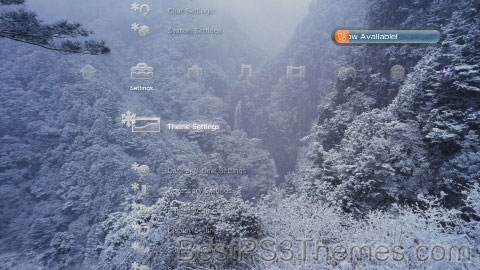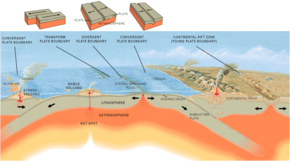Gears of War theme by Staircase
Download: GearsofWar.p3t

(1 background)
| Gears of War | |
|---|---|
 | |
| Genre(s) | Third-person shooter |
| Developer(s) | |
| Publisher(s) | Xbox Game Studios |
| Creator(s) | Cliff Bleszinski |
| Platform(s) | |
| First release | Gears of War November 7, 2006 |
| Latest release | Gears 5 September 10, 2019 |
| Spin-offs | Gears of War: Judgment Gears Pop! Gears Tactics |
Gears of War is a media franchise centered on a series of video games created by Epic Games, developed and managed by The Coalition, and owned and published by Xbox Game Studios. The franchise is best known for its third-person shooter video games, which has been supplemented by spin-off video game titles, a DC comic book series, seven novels, a board game adaptation and various merchandise.
The original trilogy focuses on the conflict between humanity and the subterranean reptilian humanoid known as the Locust Horde on the world of Sera. The first installment, Gears of War, was released on November 7, 2006 for the Xbox 360. The game follows protagonist Marcus Fenix, a soldier in the Coalition of Ordered Governments tasked to lead a last-ditch effort to destroy the Locust Horde and save humanity. Two subsequent titles, Gears of War 2 (2008) and Gears of War 3 (2011), featured a three-way conflict between humanity, the Locust Horde and their mutated counterparts, the Lambent. Gears of War: Judgment, a spin-off prequel to the series' first title, was released in 2013; it focuses on Damon Baird, one of Fenix's squad-mates.[1] Gears of War: Ultimate Edition was released for the Xbox One and Microsoft Windows between August 2015 to March 2016.[2] The fourth installment in the main series, Gears of War 4, is set 25 years after Gears of War 3 and follows Marcus Fenix's son, JD and his friends as they battle security forces deployed by a totalitarian COG government as well as the Swarm, a reconstituted version of the Locust Horde that once again threatens humanity.[3] Gears 5 (2019) is the direct sequel to Gears of War 4 and revolves around Kait Diaz, a friend of JD, who embarks on an adventure to learn the truth about her past and the connections between her history and the Locust Horde.
Gears of War was developed by Epic Games. Cliff Bleszinski, who has previously worked on Epic's Unreal Tournament games, served as the series' lead game designer for the first three installments. He was inspired by gameplay elements from Resident Evil 4. Kill Switch, and Bionic Commando.[4] The series was guided by Rod Fergusson, the executive producer and director of development of Epic Games until 2012.[5][6] The first four installments of the Gears of War series used a modified version of the Unreal Engine 3 engine.[7][8] In January 2014, Microsoft acquired rights to the franchise from Epic Games. Canadian studio The Coalition developed Gears of War 4, which was released on October 11, 2016 for the Xbox One and Windows 10.[9] A sequel, Gears 5, was released in September 2019. All six installments in Gears of War featured several multiplayer modes that allowed players to compete against each other or team-up to battle AI opponents on Xbox Live.
Gears of War became one of the best-selling franchises for the Xbox 360.[10] The series puts emphasis on cover-based combat, in which players can use objects to avoid gunfire or safely engage enemies.[11] The Gears of War games have been amongst the most popular and most played titles on Xbox Live.[10][12]
Plot[edit]
The Gears of War series takes place in an alternate universe on Sera, a fictional Earth-like planet. Human civilization develops and endures a millennia-long conflict that leaves humanity on the brink of extinction. Sera's leaders broker an era of peace that ushers scientific advancements and a cultural renaissance. Humanity's population sporadically grows and demands more energy provided by fossil fuel and nuclear power. Sera's scientists discover Imulsion, a naturally occurring substance that can be refined into a potent energy source. Imulsion solves Sera's energy crisis but ultimately creates great economic disparity as nations with direct access to Imulsion prosper, while other nations fall into financial turmoil.
Sera's citizens balkanize into two warring factions: the Coalition of Ordered Governments (COG) and Union of Independent Republics (UIR). The ensuing 79-year strife, known as the Pendulum Wars, consumes millions of lives with both sides locked in a virtual stalemate. The UIR develops the 'Hammer of Dawn', a system of satellites capable of delivering precise and destructive orbital-to-surface laser strikes. A contingent of COG commandos, led by Marcus Fenix, Dominic Santiago, and Victor Hoffman launch a daring raid on a UIR stronghold to steal the schematics for the Hammer of Dawn. The UIR surrenders after witnessing the Hammer of Dawn (completed by Marcus Fenix's father, Professor Adam Fenix) devastate one of their naval vessels.
Six weeks after the COG and UIR agreed to an armistice, a race of subterranean creatures known as the Locust Horde emerge from Sera's depths and begin assaulting human cities, wiping out 25% of the world population in the first 26 hours, referred to as 'Emergence Day'. The Locust overwhelm the already battle-worn COG forces during this surprise attack, causing them to retreat to the Jacinto Plateau, where the Locust cannot dig through its granite bedrock, and reluctantly bombard their own cities with the Hammer of Dawn to halt the Locust's advance. The ensuing scorched earth tactic destroys much of Sera's cities and human population. The COG continues to operate out of their capital city of Ephyra and other cities on the plateau such as Jacinto City, while the surviving humans, known as Stranded, are left to wander through Sera's charred ruins.
The Locust reemerge and begin a campaign of occupying human cities on the Jacinto Plateau to act as stepping stones. The Locust are eventually able to emerge and overrun Ephyra 10 years after Emergence Day. During the chaos, Marcus Fenix leads an unauthorized rescue mission to save his father from the Locust assault. During the evacuation, a helicopter is shot down by the Locust and crashes into the Fenix Estate, presumably killing Adam. The COG's leadership court martials Marcus and sentences him to 40 years in prison. After losing Ephyra, the remainder of the COG retreats to Jacinto City.
Gears of War is set 14 years after the Locust emerged, and four years into Marcus Fenix's imprisonment. The COG forces devise a last-ditch offensive to destroy the Locust by detonating the Lightmass Bomb in their tunnels. Marcus is reinstated into the COG army to supplement their depleted ranks and joins Dominic Santiago in Delta Squad on a mission to map the Locust tunnel network in preparation for the bombing. Their unit is ambushed by Locust forces and sustain heavy casualties. Fenix is repromoted to Sergeant and leads Delta with two other soldiers, Augustus Cole and Damon Baird. While the Sonic Resonator fails to map the tunnels, Delta uncovers mapping data already created by Adam Fenix. Marcus retrieves the tunnel data from his father's lab, who had been studying the Locust, and successfully deploys the Lightmass Bomb. Many of the Locust are killed. The Locust Queen, Myrrah, pledges to continue the war effort.
In the months following the Lightmass Offensive, the human population begins to suffer from a respiratory condition known as Rustlung, caused by the inhalation of Imulsion evaporated by the bombings. The Locust reemerge and bring with them a force that can sink entire cities on the Jacinto Plateau. After the destruction of Tollen and Montevado, the COG fears the Locust are trying to destroy Jacinto. Threatened with extinction, COG leader Chairman Richard Prescott devises Operation: Hollow Storm, in which thousands of soldiers will be deployed into the Hollow, locate the Locust stronghold, and eliminate them once and for all.
Gears of War 2 is set six months after the Lightmass Offensive. COG soldiers, including Delta, are deployed into the Hollow and battle the Locust to stop their plans of sinking Jacinto. The COG discovers the Locust have been using a gargantuan worm to sink the cities. After killing the Riftworm, Delta is ordered to locate the Locust stronghold by accessing intel from New Hope, a decommissioned COG research facility. The lab contains genetically altered humans called Sires, experiments on children ill with Rustlung that led to the creation of the Locust. Files there reveal the New Hope scientists fled to Mount Kadar to continue their work in solitude after the COG shut them down. The COG attacks Mount Kadar, where the Locust established their capital of Nexus. As the COG invades Nexus, they learn the Locust are mutating into the "Lambent", organisms infected with Imulsion. They have been forcing the Locust out of the Hollow for the surface world. Acting on advice from Adam Fenix, Queen Myrrah intends to sink Jacinto and use the surrounding seawater to flood the Hollow, drowning the Lambent and denying the humans their last safe city. The COG intentionally sinks Jacinto before the Locust can evacuate, drowning them in their tunnels and destroying their civilization. Adam Fenix is revealed to be alive through a radio transmission.
The remaining human population rediscover an island unscathed by the Locust War called Vectes. The Stranded gangs on the island threaten the safety of the COG, but the two groups ceasefire when the Lambent begin to emerge and overrun the island. Due to the Hollow being flooded, the Imulsion has begun to pollute the surface - causing a pandemic that aims to turn all life into Lambent organisms. Chairman Prescott is believed to be hiding secrets from the population about the origins of the Locust and Lambent, and loses their trust. Prescott abandons the COG, forcing them to disband and live as nomads, surviving against the Lambent and Locust stragglers on their own.
Gears of War 3 is set three years after Jacinto's sinking. Prescott returns to the COG and reveals to Marcus that Adam Fenix is alive. After the helicopter crash, Adam was rescued and brought to a secret island facility called Azura where he has been working the past seven years on the Imulsion countermeasure, a targeted radiation weapon which will neutralize both the Lambent and Locust. The island was sieged by Queen Myrrah's remaining forces. It is revealed that Adam knew of the Locust before E-Day and worked with Myrrah to solve the Lambent problem so the Locust wouldn't invade the surface, but was unable to provide a solution for them in time. Delta manages to locate Azura, liberate Adam, and release his countermeasure. Adam is killed by the radiation wave as he was exposed to Imulsion while developing the weapon. The countermeasure vaporizes all Lambent organisms, including Adam. The Locust are instead crystallized in an impenetrable shell. Marcus kills Queen Myrrah and humanity is able to start rebuilding.
Gears of War: RAAM's Shadow is set nine years after E-Day, shortly before the Locust invade Ephyra. High General RAAM leads a siege against Ilima City to use as a stepping stone in reaching Ephyra. Zeta Squad is ordered to locate and rescue civilians for evacuation before RAAM's forces occupy the city. The occupation of Ilima is successful and leads to the Locust taking Ephyra.
Gears of War: Judgment focuses on Baird and Cole during the early months of the Locust War. With military cadet Sofia Hendrick and former UIR soldier Garron Paduk in Kilo Squad, they disobey orders and deploy the Lightmass Missile to the destroy Locust forces occupying Halvo Bay. The squad is court-martialed, but Kilo is acquitted due to their actions resulting in victory. A separate campaign, Aftermath, features Baird, Cole, and Paduk in the hours before the activation of the Imulsion countermeasure in Gears of War 3 as they prepare for reinforcements in the upcoming battle of Azura.
Following the end of the Locust War, the humans of Sera reform the COG, led by First Minister Anya Stroud, wife of Marcus Fenix. With the assistance of robotic DeeBees created by Baird, the COG builds New Ephyra and other walled cities known as Settlements. Anya gives birth to Marcus' son, James Dominic "JD" Fenix. Anya dies from complications during pregnancy, and the COG becomes more authoritarian under First Minister Mina Jinn - prompting many civilians to abandon the COG and live off the land, known as Outsiders. After joining the military, both JD and Delmont "Del" Walker are forced to execute civilians during a protest in Settlement 2, prompting them to leave the COG and becoming Outsiders. They join the village of Fort Umson, led by Reyna Diaz and her brother-in-law, Oscar. Reyna's daughter, Kait, becomes close with JD and Del.
Gears of War 4 takes place 25 years after human victory. Fort Umson is ambushed by creatures called the Swarm. Reyna and the other villagers are captured. With JD, Kait, and Del left - they recruit Marcus to save their people. The COG pursues the group after erroneously believing they are behind a string of kidnappings. The four reach a Locust burial site where they learn the Imulsion countermeasure caused the Locust to evolve into the Swarm and have been capturing humans to transform them into soldiers for their new army. The group receives assistance from Baird and Cole as they battle their way to the Swarm's hive, but discover Reyna has been forcefully integrated in their network. Kait separates and euthanizes her mother upon her request. Kait is given the necklace that belonged to Reyna's mother, which bears the symbol of the Locust Horde.
Kait, JD, Del, and Marcus rejoin the COG and offer their intelligence to Jinn in order to help fight the Swarm. After Reyna's death, Kait begins to have nightmares and visions related to the Swarm, caused by Queen Myrrah, whose consciousness is still alive and connected to Kait's mind. Kait refuses to tell the others about her connection to the Locust out of fear. Marcus and Baird believe the Hammer of Dawn will be needed back online to defend against the upcoming war with the Swarm. Baird uncovers intel on additional Hammer of Dawn satellites at Azura.
Gears 5 begins with Delta returning to Azura to launch the Hammer satellites as the Swarm starts to attack COG Settlements. Kait is captured by the Swarm and is connected to the hivemind, in which she controls the Swarm army, resulting in her Uncle Oscar's death. After being rescued, Kait reveals her visions and believes them to be messages from the Locust, as evidenced by her grandmother's necklace. Marcus has Kait find answers at the New Hope facility and a secret lab in Mount Kadar where the scientists fled. Kait learns the Locust were the result of genetic experiments on human children sick with Rustlung and mutated with the DNA of creatures from the Hollow. The Sires were used to fertilize the stem cells of Myrrah, who was genetically immune to Imulsion. Myrrah was Reyna's mother, making Kait the next in line for queen. Kait disconnects herself from the hivemind, forcing Myrrah to possess Reyna's reanimated body. The Swarm, becoming stronger with their queen, launches an attack against New Ephyra. Using the Hammer of Dawn, the COG repels the Swarm attack. Kait vows to kill Queen Reyna before she can attack again.
Gears 5: Hivebusters follows Jeremiah Keegan, Lahni Kaliso, and Leslie Macallister shortly after the Battle of New Ephyra. Victor Hoffman, and Cole's daughter, Hana, have devised a potential solution for ending the Swarm by having soldiers infiltrate their hives and planting venom bombs to take down all the Swarm connected. They are successful in infiltrating and destroying the Swarm hive. Although it fails to kill all the Swarm, it's an advantage the COG has in the war against them.
Gears Tactics takes place a year after E-Day. Sgt. Gabriel Diaz, Kait's father and Oscar's brother, and Major Sid Redburn are tasked with assassinating Locust scientist, Ukkon, who is physically immortal by regenerating any damage done to him. Redburn reveals he was a guard at New Hope and was responsible for creating the Locust and Ukkon. Redburn is able to replicate the chemical New Hope used to counteract Ukkon's healing as a fail-safe. Diaz liberates a Locust prison camp and rescues Reyna, Kait's mother, from Ukkon's capture. Using the chemical, Reyna kills Ukkon. Diaz and Redburn abandon the COG after Prescott tries to kill them for learning about New Hope. Reyna joins them in their hunt of Ukkon's creations.
Gears of War: E-Day takes place fourteen years before the first game on Emergence Day, the day on which the Locust Horde emerged on the surface of Sera to war against humanity, and follows Marcus Fenix and Dominic Santiago.
Gameplay[edit]

Gears of War is a third-person shooter game, with its core concepts being derived from Resident Evil 4's "over the shoulder" perspective, Kill Switch's cover system, and Bionic Commando's swinging action akin to moving between points of cover.[13] The series focuses on using cover to tactically engage the enemy in battle to avoid taking damage. While behind cover, the player can fire blindly and inaccurately at their opponent, or can look around the cover and aim carefully, though exposing to enemy fire; the player can slide along cover, move between nearby cover, or vault over cover to race to a new point of cover. As the player takes damage, the "Crimson Omen" appears on the HUD, becoming more defined as the player nears low health levels. The player can regenerate their health by staying out of harm's way for a short while. Should the player take too much damage, they will become incapacitated unless revived by a teammate; depending on game mode, the player may be able to recover from this state on their own, or may die after a short amount of time if not revived. When a combatant is down, a member of the other side may attempt to execute the downed player via a "curb stomp" or other brutal methods. Some types of damage will immediately kill the player with no chance of revival, such as explosive damage. There are five levels on the first two games; they are referred to as "acts" and each act is formed into a certain number of chapters.
Players in Gears of War can carry four different weapons, with the exception of the fourth game, allowing two primary weapon slots that can carry weapons which include, but are not limited to: assault rifles, shotguns, a sniper rifle, grenade launchers and an explosive bow; one grenade slot, which may be filled with up to four grenades of a specific type (Fragmentation, Smoke, Ink and Incendiary), and one pistol-type weapon. Players can either obtain ammo or swap out their current weapons with any weapon dropped by a downed foe or from those scattered around the various maps. Most weapons feature the "Active Reload" ability: either after a weapon has depleted an ammo magazine or when the player starts a manual reload, a meter is shown on screen, and the player can attempt to stop the meter in a certain marked area. If the player stops the meter in the marked area, their reload will be completed faster than if they did not attempt an Active Reload, and if the player can stop the meter at a specific section of the marked area, they will gain a temporary slight damage boost with each reloaded shot and a faster reload. If the player stops the meter outside this area, their gun will become temporarily jammed and slow down the reload time. While most of the weapons are based on standard shooter archetypes, Gears of War's signature weapon is the Lancer Assault Rifle, which has a mounted chainsaw bayonet that can be used in close quarter combat to instantly kill a standard foe. Another notable weapon is the Gnasher Shotgun, which is one of the most-used weapons in multiplayer modes for the series, as well as its most divisive.[14] The Gnasher Shotgun, like many other weapons, can be used to bash opponents in melee, or in the case of grenades, can be stuck to a foe, exploding a few seconds later. In Gears of War 2 and Gears of War 3, all four types of grenades can be planted on any reachable surface, detonating when an opponent comes close to it. If the opponent spots the grenade, they can detonate it from a safe distance by shooting it.
All Gears of War games feature a campaign mode that can be played cooperatively with one other player. The two players take the roles of two COG soldiers, Marcus Fenix and Dominic "Dom" Santiago, as they fight the Locust. In the third game the campaign allows for up to four players to play together at the same time. The campaign mode features several levels of difficulty. At various times, the campaign will offer a choice of paths the first player can select; if the second player is present, they will be forced to take the other path. The third and fourth players in Gears of War 3 will be separated between the paths of the first and second players. In these areas, all players generally have to work together to get them through the section, such as by one player providing covering fire while the second player opens a switch that allows the first player to proceed.
The competitive multiplayer mode in Gears of War features 8 players while in Gears of War 2 features up to ten players split between COG and Locust forces in a number of gameplay types. Modes include "Warzone" and "Execution", both similar to a typical deathmatch, and "Annex" and "King of the Hill" where teams have to control a marked zone on the map. In the mode "Guardian" (only in Gears of War 2) one member of each team is designated as the leader. As long as the leader is still alive, their teammates can respawn indefinitely. As soon as the leader is executed, their teammates can no longer respawn.
Games[edit]
| 2006 | Gears of War |
|---|---|
| 2007 | |
| 2008 | Gears of War 2 |
| 2009 | |
| 2010 | |
| 2011 | Gears of War 3 |
| 2012 | |
| 2013 | Gears of War: Judgment |
| 2014 | |
| 2015 | Gears of War: Ultimate Edition |
| 2016 | Gears of War 4 |
| 2017 | |
| 2018 | |
| 2019 | Gears Pop! |
| Gears 5 | |
| 2020 | Gears Tactics |
| 2021 | |
| 2022 | |
| 2023 | |
| TBA | Gears of War: E-Day |
Main series[edit]
Gears of War[edit]
Gears of War is a third-person shooter video game developed by Epic Games and published by Microsoft Studios. It was initially released for the Xbox 360 on November 7, 2006 in North America, and on November 17 in Europe.[15] It was released for Microsoft Windows on June 11, 2007. Gears of War follows Delta Squad's efforts to help deploy a Lightmass bomb deep in the Locust tunnels to wipe out the Locust threat.
A remastered edition of the game titled Gears of War: Ultimate Edition was developed and released for the Xbox One and Microsoft Windows by The Coalition, after Microsoft acquired the rights to the Gears of War franchise from Epic Games in 2014.[16]
Gears of War 2[edit]
Gears of War 2 is a third-person shooter video game published by Microsoft Studios.[17] It is the sequel to Gears of War and was released worldwide on November 7, 2008. The game uses a heavily upgraded version of the Unreal Engine 3.[18] Gears of War 2 takes place 6 months after the first game, where the Locust are attempting to sink Jacinto Plateau, and the COG forces have decided to launch a counter-offensive to stop them before they can complete their attempt. Ultimately the COG sinks Jacinto themselves to flood the home of the Locust (the Hollow) and drown them.
A PC version of the game was originally planned before being cancelled by the developers, citing poor sales of the original PC version of Gears of War as well as concerns over piracy.
Gears of War 3[edit]
Gears of War 3 is the concluding part to the trilogy. Originally with an April 6, 2011 release date, it was moved to September 20 to anchor Microsoft Studios' holiday portfolio for the Xbox 360.[19]
Gears of War 3 takes place 18 months after the end of Gears of War 2. Marcus, Dom, and the last remnants of humanity must band together to survive against the Locust and Lambent, while trying to find Marcus's father and end the war.[20] In the end, a weapon developed by Marcus' father Adam Fenix is detonated, wiping out the Locust and the Lambent, as well as ending the war.
RAAM's Shadow[edit]
RAAM's Shadow is a secondary campaign for Gears of War 3 introduced as a DLC. Taking place several years before the original Gears of War game, RAAM's Shadow follows Zeta-Six during the Evacuation of Ilima, a city that appeared in ruins in Gears of War 2 as well as taking place from the perspective of Locust General RAAM. Zeta-Six is made up of Lieutenant Minh Young Kim from Gears of War, Tai Kaliso from Gears of War 2, Michael Barrick from the comic book series and Alicia Valera. Supporting character Jace Stratton previously appeared as a member of Delta Squad in Gears of War 3.
Gears of War 4[edit]
Gears of War 4 is an Xbox One and Windows 10 game developed by The Coalition and released on October 11, 2016.[21]
The game's plot is set 25 years after Gears of War 3 and focuses on JD Fenix, the son of Marcus Fenix, who joins his father and two new characters: Delmont "Del" Walker and Kait Diaz against the "Swarm", a new threat risen from the remnants of the Locust.[22]
Gears 5[edit]
Gears 5 is a sequel to Gears of War 4. It was released for Windows and Xbox One on September 10, 2019.[23] The game focusing on Kait Diaz, as she looks for the means to counter the Swarm, learning about the true origin of the Locust and their connection with her family.
Hivebusters[edit]
Hivebusters is a single-player downloadable content expansion pack for Gears 5. Taking place before the events of the Gears of War: Hivebusters comic book series, Hivebusters follows Team Scorpio — Corporal Jeremiah Keegan, Lieutenant Lahni Kaliso and Outsider Leslie "Mac" Macallister — as they investigate a method to infiltrate and destroy the Swarm's hives from within as seen in the "Escape" multiplayer mode of Gears 5.
Gears of War: E-Day[edit]
Gears of War: E-Day is an upcoming prequel set 14 years before the events of Gears of War. The game was officially announced on June 9, 2024 during the Xbox Games Showcase by Microsoft Gaming at the Summer Game Fest.[24][25]
Spin-offs[edit]
Gears of War: Judgment[edit]
Gears of War: Judgment is a spin-off/prequel, released on March 19, 2013.[26] The characters include Baird, accompanied by Augustus "Cole Train" Cole and two new characters, Garron Paduk and Sofia Hendrik,[27] who make up Kilo Squad. Kilo Squad is put on trial by another new character, Ezra Loomis.[27]
Gears Pop![edit]
Gears Pop! was a spin-off for mobile devices based on Funko's POP! toyline and released on August 22, 2019. However, the game was eventually discontinued on April 26, 2021.
Gears Tactics[edit]
Gears Tactics is a turn-based strategy spin-off for Xbox One and Windows, developed by Splash Damage[28] and released on April 28, 2020.[29] Set before the events of the first game, it follows a military unit led by Sgt. Gabriel Diaz, who would later become Kait's father.
Other games[edit]
Characters from the Gears of War series have made guest appearances in games outside of the Gears of War franchise. Marcus Fenix and Dominic Santiago are playable in the Xbox 360 version of Lost Planet 2.[30] General RAAM was announced as a playable character in Killer Instinct: Season Three during Microsoft's E3 2016 press conference on June 13, 2016, and was released following the presentation's conclusion.[31]
Backwards compatibility[edit]
Microsoft revealed on August 3, 2015 that the four Gears of War titles that launched on Xbox 360 — Gears of War, Gears of War 2, Gears of War 3, and Gears of War: Judgment — are compatible on Xbox One through the backwards compatibility program.[32] In 2021, all aforementioned games got 60 FPS support on Xbox Series X and Series S as part of the Xbox FPS Boost program.[33]
Music[edit]
The video game music for Gears of War was composed by Kevin Riepl, who had previously worked with Epic Games on soundtracks for Unreal Tournament 2003, Unreal Tournament 2004 and Unreal Championship 2.[34] The music for Gears of War 2 and Gears of War 3 was composed by Steve Jablonsky.[35] The music for Gears of War 4 is composed by Ramin Djawadi.[36] Ramin Djawadi continued to compose the music for the ne
Glow
Glow theme by Christoforo
Download: Glow.p3t

(3 backgrounds)
Glow or GLOW may refer to:
In science and technology[edit]
In computing and telecommunications[edit]
- Glow (JavaScript library), an open-source JavaScript library created by the BBC
- Glow (Scottish Schools National Intranet), a telecommunications project in Scotland
In physics[edit]
- Incandescence, the emission of electromagnetic radiation from a hot object
- Luminescence, any form of light emission not resulting from heat
- List of light sources
Other uses in science and technology[edit]
- Glow or Bloom (shader effect), computer graphics effect
- GLOW (gross lift-off weight), see maximum takeoff weight
In arts and entertainment[edit]
In film and television[edit]
- The Glow (film), a 2002 TV film starring Portia de Rossi
- Glow (2000 film), a film starring Frankie Ingrassia
- Glow (2011 film), a film starring Tony Lo Bianco
- The Glow (TV series), a 2000s television series starring Dean Cain
- GLOW TV, a syndicated televised version of the Gorgeous Ladies of Wrestling events from 1986 to 1990 with 104 episodes
- GLOW: The Story of the Gorgeous Ladies of Wrestling, a 2012 documentary about the 1980s TV show
- GLOW (TV series), a 2017 comedy-drama series based on the Gorgeous Ladies of Wrestling
In music[edit]
Albums[edit]
- Glow (Al Jarreau album), 1976
- Glow (Brett Eldredge album), 2016
- Glow (Andy Hunter album), 2012
- Glow (Donavon Frankenreiter album), 2010
- Glow (The Innocence Mission album), 1995
- Glow (Jackson and His Computerband album), 2013
- Glow (Joey Yung album), or the title song, 2007
- Glow (Kaki King album), 2012
- Glow (Raven album), 1994
- Glow (Reef album), 1997
- Glow (Rick James album), 1985
- Glow (Tensnake album), 2014
- The Glow (Bonnie Raitt album), 1979
- The Glow (DMA's album), 2020
- The Glow Pt. 2, by The Microphones, 2001
Songs[edit]
- "Glow" (Drake song), 2017
- "Glow" (Ella Henderson song), 2014
- "Glow" (Jessica Mauboy song), 2021
- "Glow" (Kelly Clarkson and Chris Stapleton song), 2021
- "Glow" (Madcon song), 2010
- "Glow" (Rick James song), 1985
- "Glow" (Spandau Ballet song), 1981
- "G.L.O.W." (song), by Smashing Pumpkins, 2008
- "Glow", by Alien Ant Farm from Truant, 2003
- "Glow", by Donna De Lory from In the Glow, 2003
- "Glow", by Gavin James, 2018
- "Glow", by Kelis from Tasty, 2003
- "Glow", by Kylie and Garibay from Sleepwalker, 2014
- "Glow", by Kym Marsh from Standing Tall, 2003
- "Glow", by Nelly Furtado from Loose, 2006
- "Glow", by Retro Stefson, 2012
- "Glow", by Salvador Sobral from Excuse Me, 2016
- "Glow", by Stray Kids from Mixtape, 2018
- "The Glow", by the Microphones from It Was Hot, We Stayed in the Water, 2000
- "The Glow Pt. 2", by the Microphones from The Glow Pt. 2, 2001
Other uses in arts and entertainment[edit]
- Glow, a 2014 book by Ned Beauman
- glow (magazine), a Canadian beauty and health magazine
- GLOW (Gorgeous Ladies of Wrestling), wrestling promotion
- GLOW (Greenville Light Opera Works), operetta company
- Glow (video game), a game developed by Empty Clip Studios for the iPhone
- GLOW Festival Eindhoven
Other uses[edit]
- GLOW (linguistics society), a linguistics society in Europe
- GLOW (LGBT), acronym meaning gay, lesbian, or whatever
- Glow by JLo, a perfume
- Glow Energy, a utility company in Thailand
- Glów, a village in southern Poland
- The Glow, a plot device from the Scott Pilgrim comics.
See also[edit]
Drift
Drift theme by Christoforo
Download: Drift.p3t

(3 backgrounds)
Drift or Drifts may refer to:
Geography[edit]
- Drift or ford (crossing) of a river
- Drift (navigation), difference between heading and course of a vessel
- Drift, Kentucky, unincorporated community in the United States
- In Cornwall, England:
- Drift, Cornwall, village
- Drift Reservoir, associated with the village
Science, technology, and physics[edit]
- Directional Recoil Identification from Tracks, a dark-matter experiment
- Drift (video gaming), a typical game-controller malfunction
- Drift pin, metalworking tool for localizing hammer blows and for aligning holes
- Drift (geology), deposited material of glacial origin
- drift (in mining), a roughly horizontal passage; an adit
- Drift, linear term of a stochastic process
- Drift (motorsport), the controlled sliding of a vehicle through a sharp turn, either via over-steering with sudden sharp braking, or counter-steering with a sudden "clutch kick" acceleration
- Incremental changes:
- Drift (linguistics), a type of language change
- Genetic drift, change in allele frequency
- Drift (telecommunication), long-term change in an attribute of a system or equipment
- Clock drift - variation in time-keeping
- Frequency drift - oscillator offset in electrical engineering
- Concept drift (in data-science and machine-learning applications)
Film and television[edit]
- Drift (film series), 2006–2008 film series by Futoshi Jinno
- Drift, 2006 TV crime drama film directed by Paul W. S. Anderson
- Drift, fictional technology system that links the minds of two Jaeger pilots in the 2013 sci-fi film Pacific Rim and its sequel
- Drift (2013 Australian film), film starring Sam Worthington
- Drift (2013 Belgian film), art house film
- Drift (2015 film), Swiss film
- Drift (2017 film), German film
- Drift, 2007 experimental short film by Max Hattler
- Drift (2023 film), a film by Anthony Chen
Books and Publishing[edit]
- The Drift (magazine)
- Drift (novel), a 2002 Doctor Who novel
- Drift: The Unmooring of American Military Power, a book by Rachel Maddow
- Plot drift, when a story deviates unexpectedly from its initial direction, in writing, television, or other media.
Music[edit]
- The Drift (band), American post-rock band
- Songs:
- "Drift", 1985 song from work ‘’Secret’’
- "Drift" (Emily Osment song) (2011)
- "Drift", end credits song of 2013 film Pacific Rim
- Albums/EPs:
- Drift (Flotsam and Jetsam album) (1995)
- The Drift, album by Scott Walker (2006)
- Drift (Ken Block album) (2008)
- Drift (Nosaj Thing album) (2009)
- The Drift (EP), by Michelle Channel and Arjun Singh (2014)
- Drift (Erra album) (2016)
- Drift (Underworld project), ongoing music-and-video experiment by that band (2018-2019)
- Drift (The Devlins album), 1993
- Drift, short for drift phonk, a subgenre of phonk
See also[edit]
- Daventry International Rail Freight Terminal (DIRFT), a rail-road intermodal freight terminal in Northamptonshire, England
- Dérive, an unplanned journey through a landscape
- Drifter (disambiguation)
- Drifting (disambiguation)
- Velddrif, a town in South Africa
- All pages with titles beginning with Drift
- All pages with titles containing drift
Blue Christmas
Blue Christmas theme by scotsee
Download: Blue.p3t

(1 background)
Blue Christmas may refer to:
- Blue Christmas (holiday), a Christian observance in the latter part of the Advent season
- "Blue Christmas" (song), a Christmas song written by Billy Hayes and Jay W. Johnson and famously performed by Elvis Presley
- Blue Christmas (film), a 1978 Japanese science fiction film
- "Blue Christmas", an episode of the TV series NCIS: New Orleans
- Blue Christmas (Ricky Van Shelton album)
- Blue Christmas (Elvis Presley album), 1992
- Blue Christmas (Ernest Tubb album), 1964
- Blue Christmas (Jimmy Barnes album), 2022
- "Blue Xmas (To Whom It May Concern)", a song by Miles Davis on the album Jingle Bell Jazz
Blue Christmas may refer to:
- Blue Christmas (holiday), a Christian observance in the latter part of the Advent season
- "Blue Christmas" (song), a Christmas song written by Billy Hayes and Jay W. Johnson and famously performed by Elvis Presley
- Blue Christmas (film), a 1978 Japanese science fiction film
- "Blue Christmas", an episode of the TV series NCIS: New Orleans
- Blue Christmas (Ricky Van Shelton album)
- Blue Christmas (Elvis Presley album), 1992
- Blue Christmas (Ernest Tubb album), 1964
- Blue Christmas (Jimmy Barnes album), 2022
- "Blue Xmas (To Whom It May Concern)", a song by Miles Davis on the album Jingle Bell Jazz
HAZE
Xmas B3yond
Christmas B3yond theme by wolfgang187
Download: XmasB3yondHD.p3t

(1 background)
P3T Unpacker v0.12
Copyright (c) 2007. Anoop Menon
This program unpacks Playstation 3 Theme files (.p3t) so that you can touch-up an existing theme to your likings or use a certain wallpaper from it (as many themes have multiple). But remember, if you use content from another theme and release it, be sure to give credit!
Download for Windows: p3textractor.zip
Instructions:
Download p3textractor.zip from above. Extract the files to a folder with a program such as WinZip or WinRAR. Now there are multiple ways to extract the theme.
The first way is to simply open the p3t file with p3textractor.exe. If you don’t know how to do this, right click the p3t file and select Open With. Alternatively, open the p3t file and it will ask you to select a program to open with. Click Browse and find p3textractor.exe from where you previously extracted it to. It will open CMD and extract the theme to extracted.[filename]. After that, all you need to do for any future p3t files is open them and it will extract.
The second way is very simple. Just drag the p3t file to p3textractor.exe. It will open CMD and extract the theme to extracted.[filename].
For the third way, first put the p3t file you want to extract into the same folder as p3textractor.exe. Open CMD and browse to the folder with p3extractor.exe. Enter the following:
p3textractor filename.p3t [destination path]Replace filename with the name of the p3t file, and replace [destination path] with the name of the folder you want the files to be extracted to. A destination path is not required. By default it will extract to extracted.filename.
Wood Panel
Wood Panel theme by PenguinRage
Download: WoodPanel.p3t

(1 background)
P3T Unpacker v0.12
Copyright (c) 2007. Anoop Menon
This program unpacks Playstation 3 Theme files (.p3t) so that you can touch-up an existing theme to your likings or use a certain wallpaper from it (as many themes have multiple). But remember, if you use content from another theme and release it, be sure to give credit!
Download for Windows: p3textractor.zip
Instructions:
Download p3textractor.zip from above. Extract the files to a folder with a program such as WinZip or WinRAR. Now there are multiple ways to extract the theme.
The first way is to simply open the p3t file with p3textractor.exe. If you don’t know how to do this, right click the p3t file and select Open With. Alternatively, open the p3t file and it will ask you to select a program to open with. Click Browse and find p3textractor.exe from where you previously extracted it to. It will open CMD and extract the theme to extracted.[filename]. After that, all you need to do for any future p3t files is open them and it will extract.
The second way is very simple. Just drag the p3t file to p3textractor.exe. It will open CMD and extract the theme to extracted.[filename].
For the third way, first put the p3t file you want to extract into the same folder as p3textractor.exe. Open CMD and browse to the folder with p3extractor.exe. Enter the following:
p3textractor filename.p3t [destination path]Replace filename with the name of the p3t file, and replace [destination path] with the name of the folder you want the files to be extracted to. A destination path is not required. By default it will extract to extracted.filename.
Classy Pink
Classy Pink theme by Sony
Download: ClassyPink.p3t

(1 background)
P3T Unpacker v0.12
Copyright (c) 2007. Anoop Menon
This program unpacks Playstation 3 Theme files (.p3t) so that you can touch-up an existing theme to your likings or use a certain wallpaper from it (as many themes have multiple). But remember, if you use content from another theme and release it, be sure to give credit!
Download for Windows: p3textractor.zip
Instructions:
Download p3textractor.zip from above. Extract the files to a folder with a program such as WinZip or WinRAR. Now there are multiple ways to extract the theme.
The first way is to simply open the p3t file with p3textractor.exe. If you don’t know how to do this, right click the p3t file and select Open With. Alternatively, open the p3t file and it will ask you to select a program to open with. Click Browse and find p3textractor.exe from where you previously extracted it to. It will open CMD and extract the theme to extracted.[filename]. After that, all you need to do for any future p3t files is open them and it will extract.
The second way is very simple. Just drag the p3t file to p3textractor.exe. It will open CMD and extract the theme to extracted.[filename].
For the third way, first put the p3t file you want to extract into the same folder as p3textractor.exe. Open CMD and browse to the folder with p3extractor.exe. Enter the following:
p3textractor filename.p3t [destination path]Replace filename with the name of the p3t file, and replace [destination path] with the name of the folder you want the files to be extracted to. A destination path is not required. By default it will extract to extracted.filename.
Nature
Nature theme by Sony
Download: Nature.p3t

(1 background)

Nature is an inherent character or constitution,[1] particularly of the ecosphere or the universe as a whole. In this general sense nature refers to the laws, elements and phenomena of the physical world, including life. Although humans are part of nature, human activity or humans as a whole are often described as at times at odds, or outright separate and even superior to nature.[2]
During the advent of modern scientific method in the last several centuries, nature became the passive reality, organized and moved by divine laws.[3][4] With the Industrial revolution, nature increasingly became seen as the part of reality deprived from intentional intervention: it was hence considered as sacred by some traditions (Rousseau, American transcendentalism) or a mere decorum for divine providence or human history (Hegel, Marx). However, a vitalist vision of nature, closer to the pre-Socratic one, got reborn at the same time, especially after Charles Darwin.[2]
Within the various uses of the word today, "nature" often refers to geology and wildlife. Nature can refer to the general realm of living plants and animals, and in some cases to the processes associated with inanimate objects—the way that particular types of things exist and change of their own accord, such as the weather and geology of the Earth. It is often taken to mean the "natural environment" or wilderness—wild animals, rocks, forest, and in general those things that have not been substantially altered by human intervention, or which persist despite human intervention. For example, manufactured objects and human interaction generally are not considered part of nature, unless qualified as, for example, "human nature" or "the whole of nature". This more traditional concept of natural things that can still be found today implies a distinction between the natural and the artificial, with the artificial being understood as that which has been brought into being by a human consciousness or a human mind. Depending on the particular context, the term "natural" might also be distinguished from the unnatural or the supernatural.[2]
Etymology[edit]
The word nature is borrowed from the Old French nature and is derived from the Latin word natura, or "essential qualities, innate disposition", and in ancient times, literally meant "birth".[5] In ancient philosophy, natura is mostly used as the Latin translation of the Greek word physis (φύσις), which originally related to the intrinsic characteristics of plants, animals, and other features of the world to develop of their own accord.[6][7] The concept of nature as a whole, the physical universe, is one of several expansions of the original notion;[2] it began with certain core applications of the word φύσις by pre-Socratic philosophers (though this word had a dynamic dimension then, especially for Heraclitus), and has steadily gained currency ever since.
Earth[edit]
−13 — – −12 — – −11 — – −10 — – −9 — – −8 — – −7 — – −6 — – −5 — – −4 — – −3 — – −2 — – −1 — – 0 — |
| |||||||||||||||||||||||||||||||||||||||

Earth is the only planet known to support life, and its natural features are the subject of many fields of scientific research. Within the Solar System, it is third closest to the Sun; it is the largest terrestrial planet and the fifth largest overall. Its most prominent climatic features are its two large polar regions, two relatively narrow temperate zones, and a wide equatorial tropical to subtropical region.[8] Precipitation varies widely with location, from several metres of water per year to less than a millimetre. 71 percent of the Earth's surface is covered by salt-water oceans. The remainder consists of continents and islands, with most of the inhabited land in the Northern Hemisphere.
Earth has evolved through geological and biological processes that have left traces of the original conditions. The outer surface is divided into several gradually migrating tectonic plates. The interior remains active, with a thick layer of plastic mantle and an iron-filled core that generates a magnetic field. This iron core is composed of a solid inner phase, and a fluid outer phase. Convective motion in the core generates electric currents through dynamo action, and these, in turn, generate the geomagnetic field.
The atmospheric conditions have been significantly altered from the original conditions by the presence of life-forms,[9] which create an ecological balance that stabilizes the surface conditions. Despite the wide regional variations in climate by latitude and other geographic factors, the long-term average global climate is quite stable during interglacial periods,[10] and variations of a degree or two of average global temperature have historically had major effects on the ecological balance, and on the actual geography of the Earth.[11][12]
Geology[edit]
Geology is the science and study of the solid and liquid matter that constitutes the Earth. The field of geology encompasses the study of the composition, structure, physical properties, dynamics, and history of Earth materials, and the processes by which they are formed, moved, and changed. The field is a major academic discipline, and is also important for mineral and hydrocarbon extraction, knowledge about and mitigation of natural hazards, some Geotechnical engineering fields, and understanding past climates and environments.
Geological evolution[edit]

The geology of an area evolves through time as rock units are deposited and inserted and deformational processes change their shapes and locations.
Rock units are first emplaced either by deposition onto the surface or intrude into the overlying rock. Deposition can occur when sediments settle onto the surface of the Earth and later lithify into sedimentary rock, or when as volcanic material such as volcanic ash or lava flows, blanket the surface. Igneous intrusions such as batholiths, laccoliths, dikes, and sills, push upwards into the overlying rock, and crystallize as they intrude.
After the initial sequence of rocks has been deposited, the rock units can be deformed and/or metamorphosed. Deformation typically occurs as a result of horizontal shortening, horizontal extension, or side-to-side (strike-slip) motion. These structural regimes broadly relate to convergent boundaries, divergent boundaries, and transform boundaries, respectively, between tectonic plates.
Historical perspective[edit]

Earth is estimated to have formed 4.54 billion years ago from the solar nebula, along with the Sun and other planets.[13] The Moon formed roughly 20 million years later. Initially molten, the outer layer of the Earth cooled, resulting in the solid crust. Outgassing and volcanic activity produced the primordial atmosphere. Condensing water vapor, most or all of which came from ice delivered by comets, produced the oceans and other water sources.[14] The highly energetic chemistry is believed to have produced a self-replicating molecule around 4 billion years ago.[15]

Continents formed, then broke up and reformed as the surface of Earth reshaped over hundreds of millions of years, occasionally combining to make a supercontinent. Roughly 750 million years ago, the earliest known supercontinent Rodinia, began to break apart. The continents later recombined to form Pannotia which broke apart about 540 million years ago, then finally Pangaea, which broke apart about 180 million years ago.[17]
During the Neoproterozoic era, freezing temperatures covered much of the Earth in glaciers and ice sheets. This hypothesis has been termed the "Snowball Earth", and it is of particular interest as it precedes the Cambrian explosion in which multicellular life forms began to proliferate about 530–540 million years ago.[18]
Since the Cambrian explosion there have been five distinctly identifiable mass extinctions.[19] The last mass extinction occurred some 66 million years ago, when a meteorite collision probably triggered the extinction of the non-avian dinosaurs and other large reptiles, but spared small animals such as mammals. Over the past 66 million years, mammalian life diversified.[20]
Several million years ago, a species of small African ape gained the ability to stand upright.[16] The subsequent advent of human life, and the development of agriculture and further civilization allowed humans to affect the Earth more rapidly than any previous life form, affecting both the nature and quantity of other organisms as well as global climate. By comparison, the Great Oxygenation Event, produced by the proliferation of algae during the Siderian period, required about 300 million years to culminate.
The present era is classified as part of a mass extinction event, the Holocene extinction event, the fastest ever to have occurred.[21][22] Some, such as E. O. Wilson of Harvard University, predict that human destruction of the biosphere could cause the extinction of one-half of all species in the next 100 years.[23] The extent of the current extinction event is still being researched, debated and calculated by biologists.[24][25][26]
Atmosphere, climate, and weather[edit]

The Earth's atmosphere is a key factor in sustaining the ecosystem. The thin layer of gases that envelops the Earth is held in place by gravity. Air is mostly nitrogen, oxygen, water vapor, with much smaller amounts of carbon dioxide, argon, etc. The atmospheric pressure declines steadily with altitude. The ozone layer plays an important role in depleting the amount of ultraviolet (UV) radiation that reaches the surface. As DNA is readily damaged by UV light, this serves to protect life at the surface. The atmosphere also retains heat during the night, thereby reducing the daily temperature extremes.
Terrestrial weather occurs almost exclusively in the lower part of the atmosphere, and serves as a convective system for redistributing heat.[27] Ocean currents are another important factor in determining climate, particularly the major underwater thermohaline circulation which distributes heat energy from the equatorial oceans to the polar regions. These currents help to moderate the differences in temperature between winter and summer in the temperate zones. Also, without the redistributions of heat energy by the ocean currents and atmosphere, the tropics would be much hotter, and the polar regions much colder.

Weather can have both beneficial and harmful effects. Extremes in weather, such as tornadoes or hurricanes and cyclones, can expend large amounts of energy along their paths, and produce devastation. Surface vegetation has evolved a dependence on the seasonal variation of the weather, and sudden changes lasting only a few years can have a dramatic effect, both on the vegetation and on the animals which depend on its growth for their food.
Climate is a measure of the long-term trends in the weather. Various factors are known to influence the climate, including ocean currents, surface albedo, greenhouse gases, v
Pixels
Pixels theme by Sony
Download: Pixels.p3t
![]()
(1 background)
Redirect to:
This page is a redirect. The following categories are used to track and monitor this redirect:
|

